I sure do love it when I discover a pastel that shows an artist’s process! Recently I was mooching around The Met (online) and came across this piece by Edgar Degas of what is believed to be Mathilde Musson, a cousin of Degas’ living in New Orleans.
Here’s the full sheet of the pastel work.
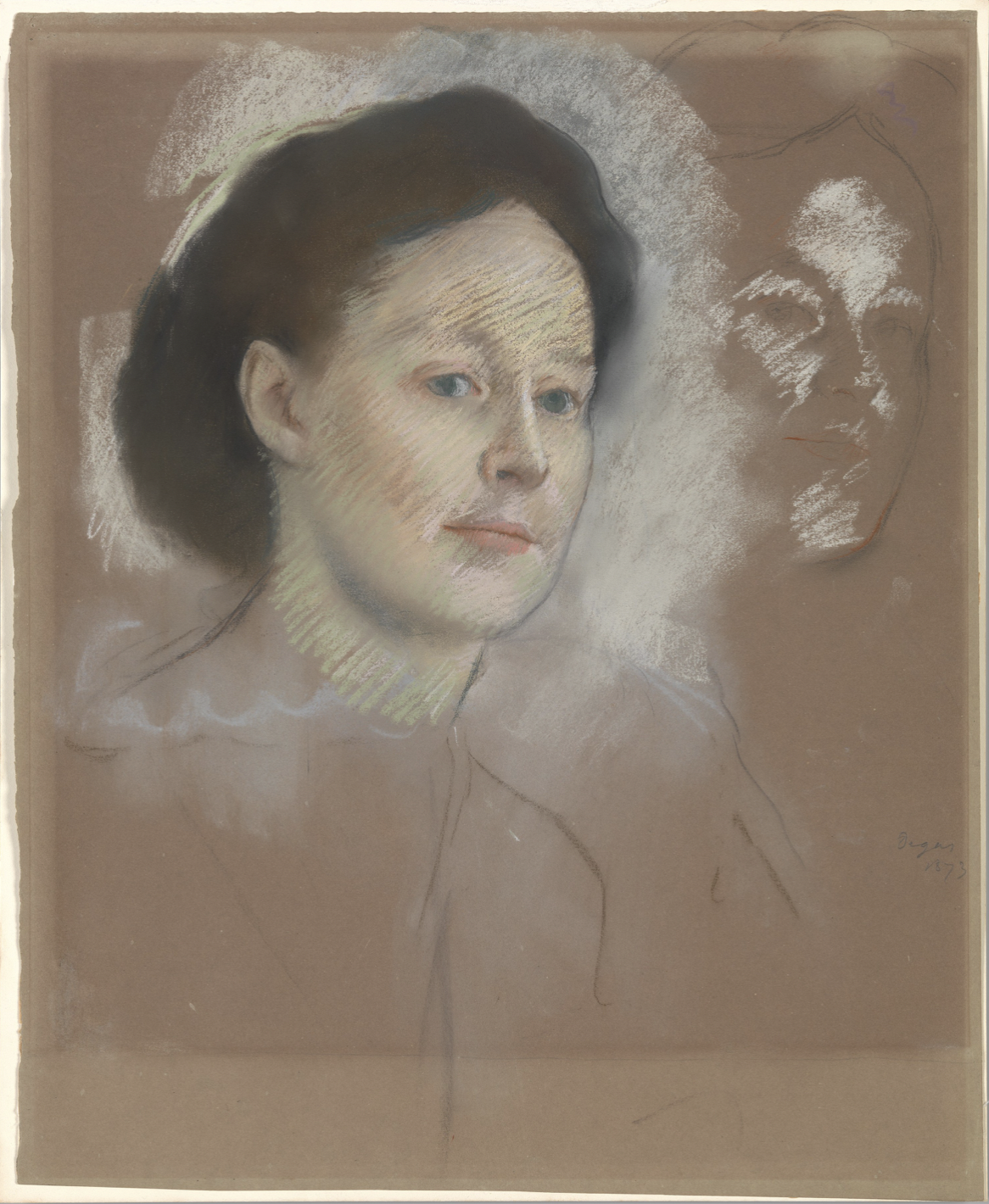
Something to note is that this was originally done on green paper. Over time, it’s changed (faded?) to the brown we now see. It’s important to realise that Degas chose green to use as the undercolour for this portrait of Mathilde Musson, not this visible warm brown.
Now let’s have a closer look at a few areas of the piece.
First, there’s that second drawing to the right. This is what caught my attention.
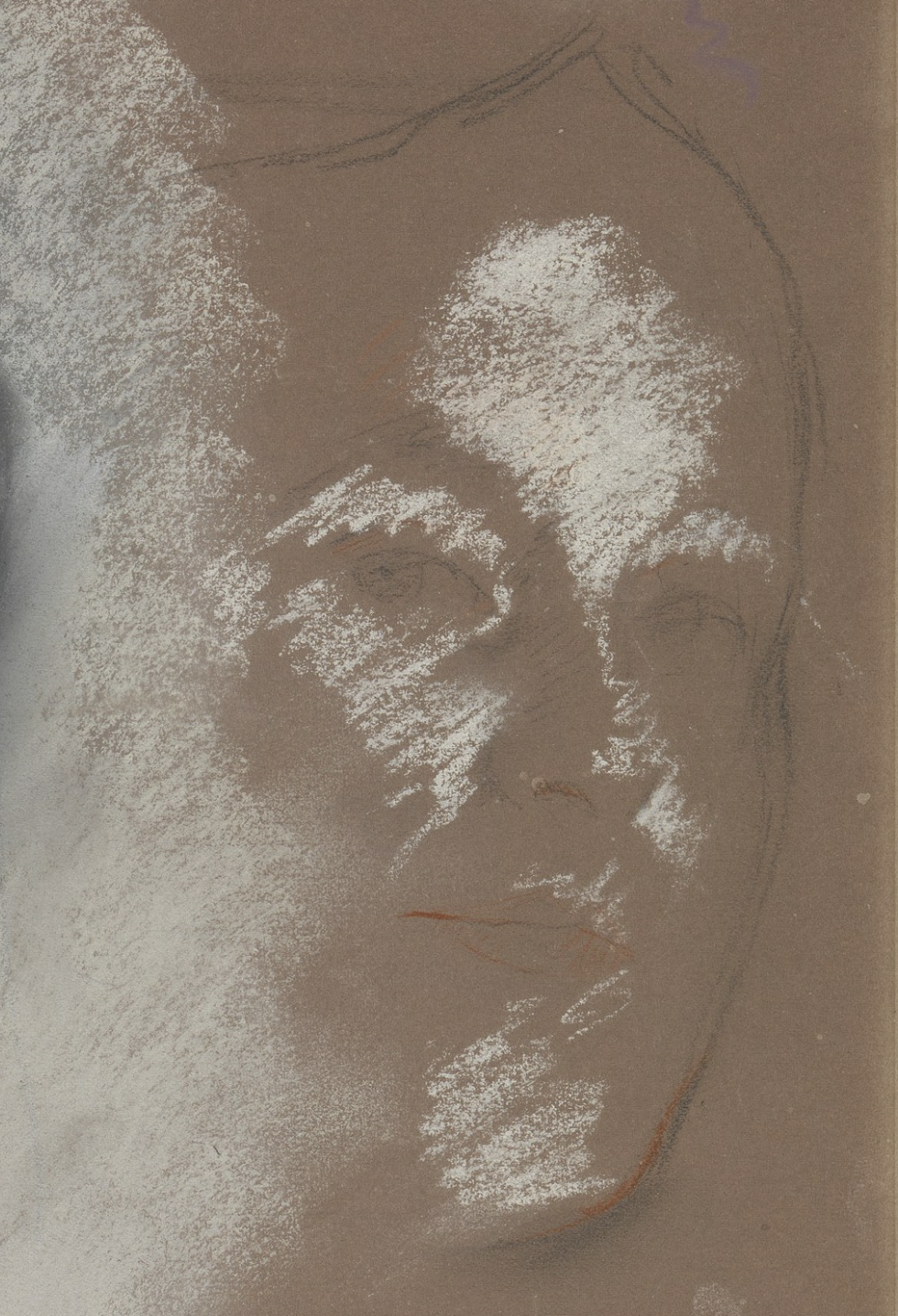
The unfinished face gives us clues as to how Degas may have started his work. He put down a few lines to indicate the contour of the face, the eyes, the nose, and the mouth. Then he added a white to indicate the lightest parts of the face. You can almost make out a similar working start in the more finished of the two faces. The question is, which came first? It would seem that this was a second exploration of the face structure as it’s near the edge of the paper. You can also make out a possible change in the way the position of the head relates to the body, but maybe that’s going too far. What do you think? (Do leave a comment with your thoughts!)
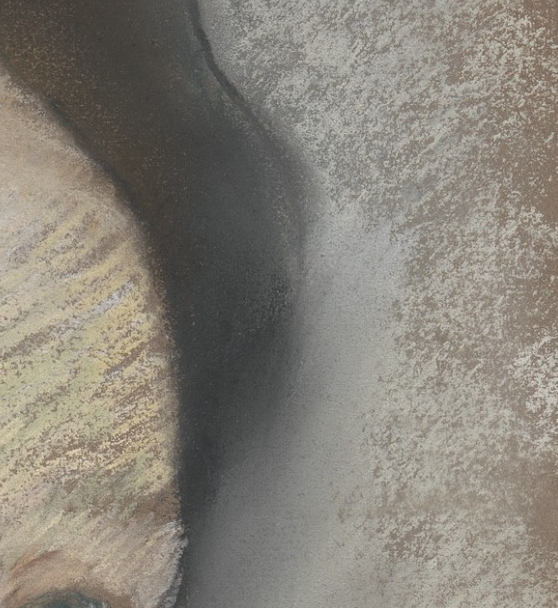
This blended area is interesting – it appears to reveal that Degas made a correction in where the outer edge of the hair ends.
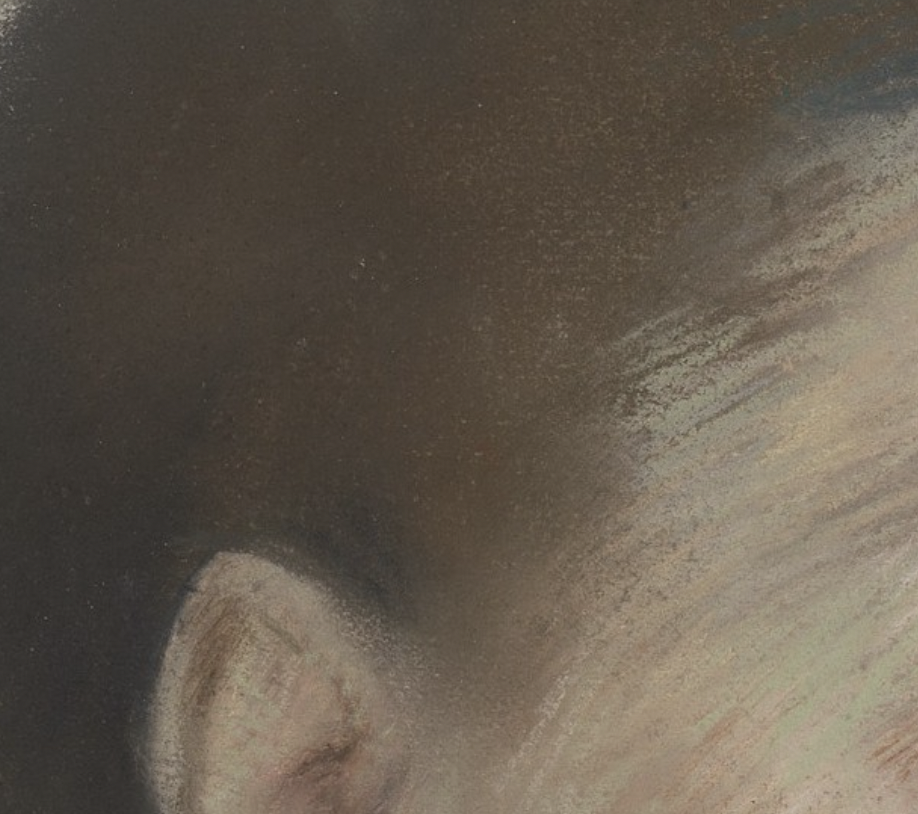
I love the way Degas indicates the hairline with an initial area of (mainly) one colour with linear marks then added to show where the skin tone overlaps. This is the opposite of what we may tend to do – we might lay down an area of skin and then apply linear marks to represent hair!
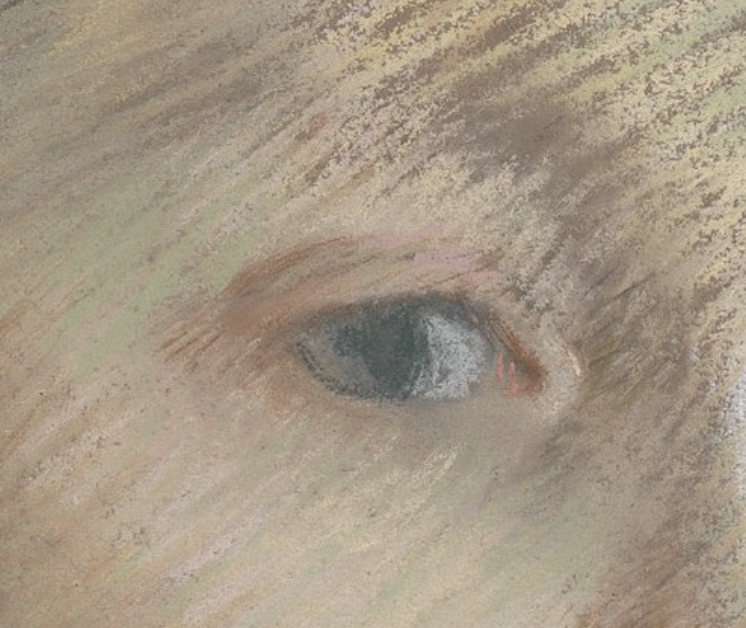
This closeup is here just because I’m always intrigued by the way an artist creates the illusion of eyes – the colours they use, the values they use, the drawing, all of it!
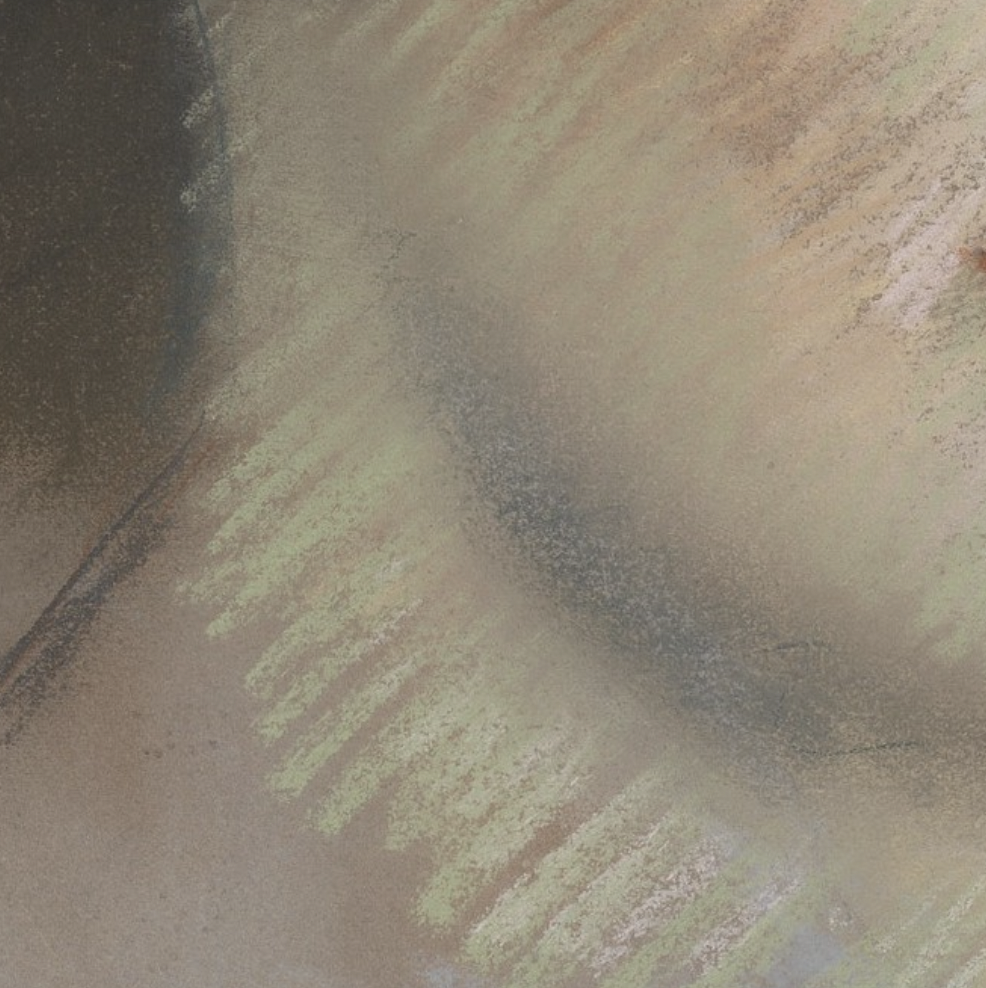
It’s so easy to overemphasise (in colour, value, and edge) the area below the jaw bone. Degas applied a thin layer of grey-blue pastel and a bit of warm brown. Lighter marks are hatched along the edges. Remember the paper showing through the blue pastel would have been green rather than brown (cool rather than warm).
Let’s have a look at the whole sheet again.

There’s more to discuss about this piece and I’d love to hear your thoughts as a comment!
The notes from The Met’s website read:
The sitter for this likeness is thought to be Mathilde Musson, one of Degas’s cousins in New Orleans. Degas made a number of pictures featuring Mathilde and her two sisters when he visited the family during the fall and winter of 1872–73. The women can be difficult to tell apart, but the tilt of the head and the intelligent, sidelong gaze seen here closely resemble the figure of Mathilde in another, more finished pastel (Ordrupgaard, Copenhagen). Mathilde was then a new mother, and the artist complained, “to make a cousin sit for you who is feeding an imp of two months is quite hard work.”
I got curious about the pastel in Copenhagen so went to look for it. It’s not one I recall seeing. There’s a lot to talk about with this one too! It’s definitely not a finished piece. Another time….
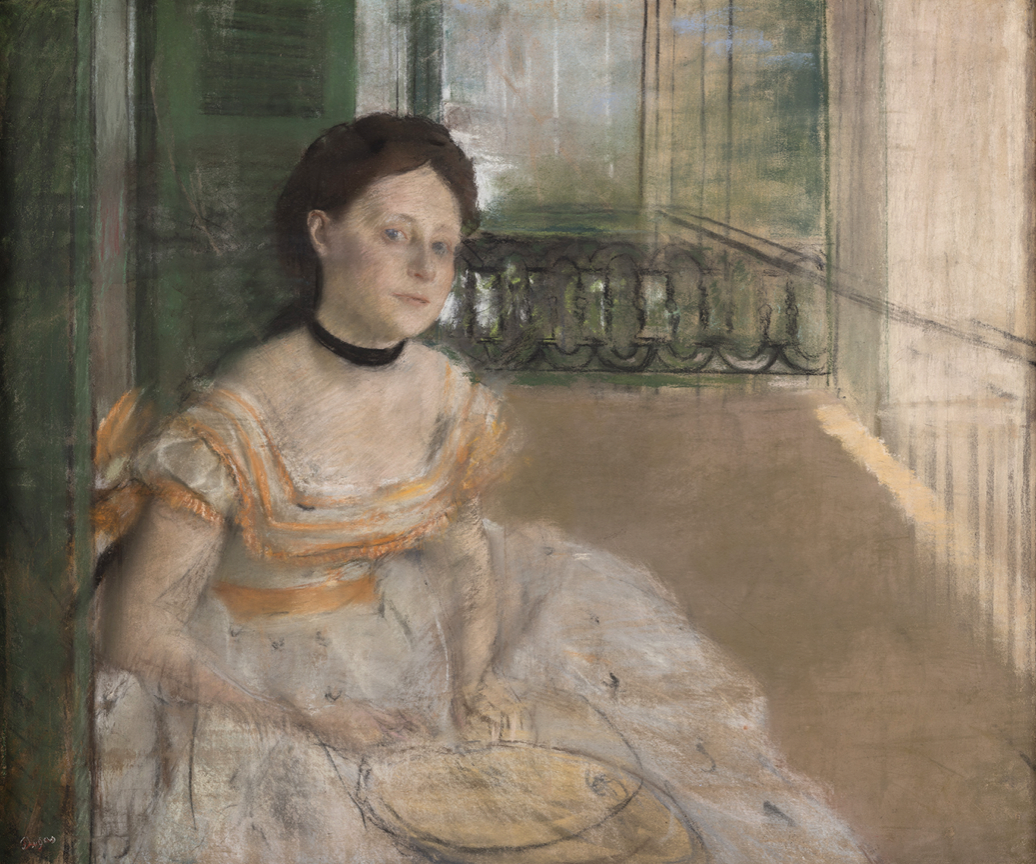
________________________________________________________________________
Albert Handell Wins Herman Margulies Award at 50th Anniversary PSA Show
Albert Handell, one of our advisory Board members, took home the Herman Margulies Award for Excellence from the Pastel Society of America’s 50th Annual Exhibition, “Enduring Brilliance” for his painting “The Giant.”
Handell’s painting will be included as a part of a select group of paintings for an exhibition at the Butler Institute of American Art in Youngstown, Ohio, USA, from 1 March to 30 May 2023.
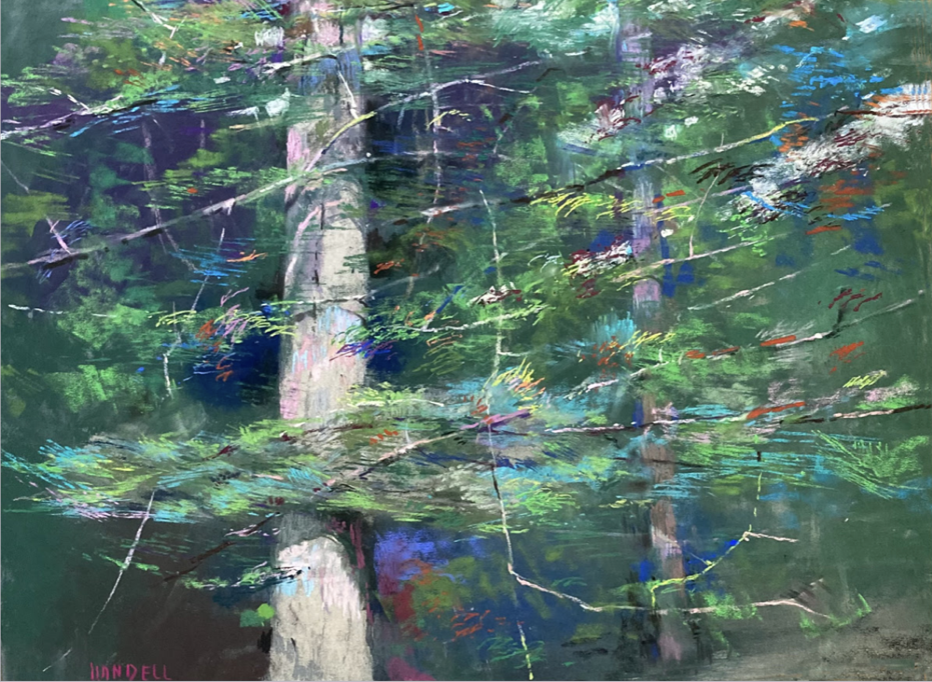
Congratulations Albert!
You can learn from the master! Check out his video.
And that’s it for this time,
Gail

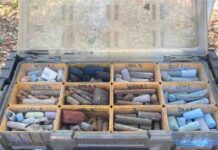
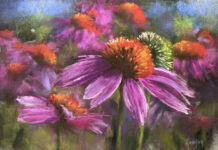

Gail, Please continue these illuminations about great pastel artists and their works!! The Degas critique above was wonderful. I like the process he used regarding the hairline. That was what I noticed first. Historically traditional oil painters used terra vert, in a scale of values, to do an underpainting, then came in with color. Degas was doing the same with the green paper. Thank you! Do more.
Denise that is soooo awesome to hear! Encouragement like yours will definitely assure more close looks at historical pieces!
And thank you for adding to the knowledge pool with your own insights regarding Degas’ use of the green colour paper following the traditional method oil painters used.
Thoroughly enjoyed the critique of the Degas, a lovely study. One thing that struck me is that the white highlights at top right resemble a skull, perhaps he was mapping out/preserving where the eye sockets should be, how big, where the light would hit the ridges under the skin. It just felt anatomical. Thoughts?
Glad you enjoyed it Beth!
Interesting idea and yes, he seems to be marking those areas that are catching the light which here correspond to the structure below the skin.